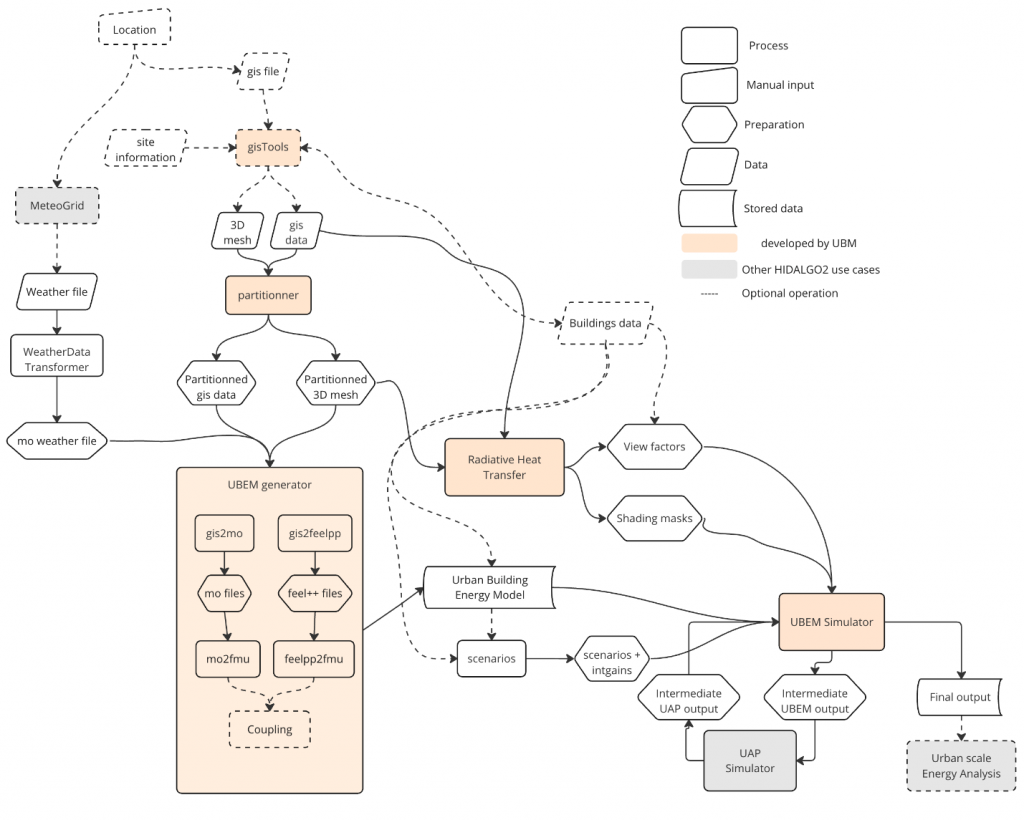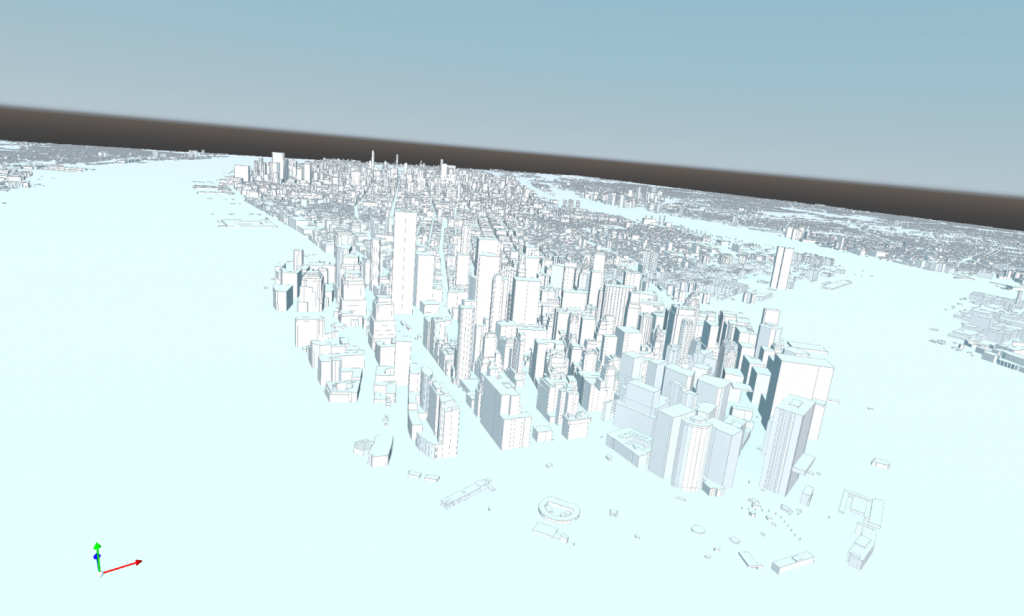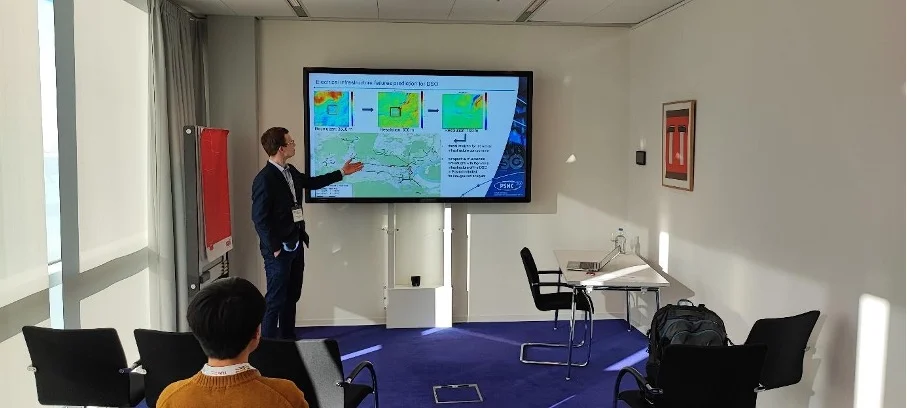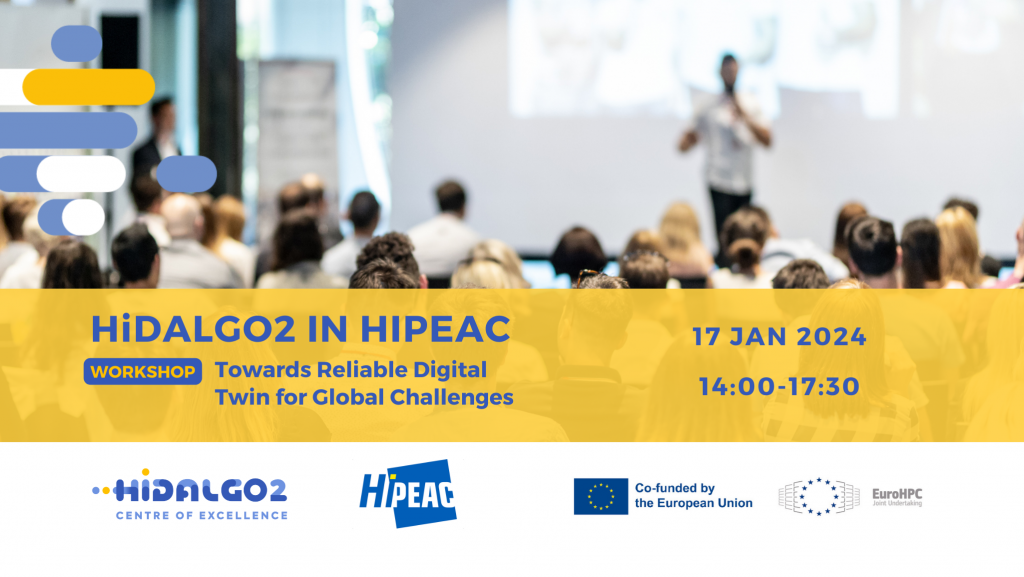On November 8, 2023, Vincent Chabannes (Research Engineer – University of Strasbourg / Cemosis) and Christophe Prud’homme (Professor in Applied Mathematics at the University of Strasbourg/ Cemosis/partner at HiDALGO2) presented at the Exa-DI workshop on Efficient Discretization@Exascale, the HiDALGO2 Urban Building Pilot and in particular the challenges we face to reach exascale computing from the discretisation point of view. The HiDALGO2 Urban Building pilot has been submitted to be one of the Application Demonstrators of Exa-DI.
The first workshop of the Exa-DI project, a project of the NumPEx programme took place on November 7 and 8, 2023. It was held at the Amphithéâtre J. Talairach (Neurospin) at CEA Saclay in Gif-sur-Yvette.
The HiDALGO2 Urban Building Pilot integrates Dynamic Energy Simulation with indoor air quality models for urban buildings, leveraging advanced algorithms and high-performance computing. Focused on both city-scale and building-scale analyses, it aims to enhance energy efficiency, comfort, and sustainability. This project aligns with global initiatives like the European Green Deal, emphasizing a holistic approach to urban environmental challenges.
Main focus points
Our presentation focused on the following points:
Objectives:
- Enhance energy performance, indoor air quality, and human comfort in urban buildings.
- Focus on computational methods for modeling and optimizing urban environments.
Technical Workflow and Challenges:
- Comprehensive workflow integrating mesh generation, parallel mesh adaptation, and multi-fidelity models.
- Challenges in large-scale mesh generation for accurate computational modeling.
- Development of scalable solutions for complex urban building simulations.
Below is a representation of our simulation workflow:

We showed various examples (including challenges and bottlenecks) of city mesh construction that can be used by simulation tools, here is for example a mesh construction of the city of New York (USA).

Workshop’s participants and key sessions
The workshop featured a diverse group of participants presenting Application Demonstrators from various research and industry sectors. Key contributors included:
Jean-Pierre Vilotte from CNRS, provided the introductory context for the workshop.
Eric Savin from ONERA, discussed exascale performance evaluation for aircraft prototypes.
Henri Calandra from TotalEnergies, focused on exascale multiphysics simulators for CO2 sequestration.
Christian Trott from SNL, presented Kokkos.
Julien Vanharen & Loic Marechal from INRIA, addressed exascale simulations for turbomachinery.
Nathanaël Schaeffer & Hugo Frezat from CNRS – Université Grenoble Alpes & Paris Cité, explored machine learning applications in Earth dynamo simulations.
Vincent Chabannes & Christophe Prud’homme from Université de Strasbourg, Cemosis, and CoE Hidalgo2 discussed dynamic energy simulation for urban buildings.
Olivier Jamond from CEA, presenting the MANTA project.
Soleiman Yousef from IFP Energies nouvelles, spoke on performance issues in geoscience applications.
Virginie GrandGirard from CEA, discussed the GYSELA code for plasma turbulence simulations.
The key sessions included:
Introduction and Context: Presented by Jean-Pierre Vilotte from CNRS, who set the stage for the workshop’s main theme.
Participant Self-Introduction: Allowing attendees to introduce themselves and their interests.
Various Technical Sessions: These sessions featured talks on topics like exascale performance evaluation for aircraft prototypes, multiphysics simulators for CO2 sequestration, and advancements in exascale simulations for different applications like turbomachinery and dynamic energy simulation for urban buildings.
Discussions and Round Tables: These sessions provided opportunities for attendees to engage in discussions and share insights on the presented topics.



